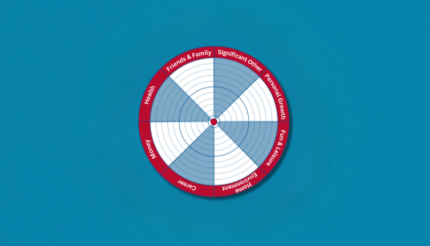Are you ready to embrace change? Here’s a formula you can use.
Change is inevitable; whether you like it or not, change happens. You can be proactive – be clear on where you want to go – and what you need to change – to keep up with the world. Or you can be reactive – wait until the world forces change upon you.
If you want to be successful, you must embrace change and grow. So, how do you change for the better?
Brad Sugars, Chairman and Founder of ActionCOACH, has created an effective formula for change:
(D x V) + F > R
D stands for Dissatisfaction
V is for the Vision of your future
F represents the First Steps you take on a new path in your life
R is the Resistance to change
Let’s see how each of the formula’s elements influences your habits and how they can contribute to your personal development.
1. Resistance
Resistance to change comes from two sources: external and internal.
External factors that hold you back are usually people around you who can find multiple reasons why you will not be successful.
Resistance from external factors manifests itself when we underperform so that other people feel comfortable around us.
As Marianne Williamson writes, in A Return to Love, we have a responsibility to do our best and become the best versions of ourselves. She says, “Our deepest fear is not that we are inadequate. Our deepest fear is that we are powerful beyond measure. It is our light, not our darkness, that most frightens us. We ask ourselves: who am I to be brilliant, gorgeous, talented, fabulous? Actually, who are you not to be? You are a child of God. Your playing small doesn’t serve the world.”
Put simply, your goal is to be amazing – so that other people can follow your example. Overcoming external factors is a matter of deciding to take action, to become better at what you do and be successful.
Internal elements, on the other hand, that generate resistance to change can be harder to fight against. Internal resistance comes from fear. This can be either fear of failure or fear of success.
How to Overcome Fear
Fear stands for “False Evidence Appearing Real,” or, according to Brad Sugars, it’s an acronym for “Failure Expected and Realised.” The mind can find all kinds of negatives if you let it wander. It will start putting together worst-case scenarios and build on them until you start believing them to be real.
Where do fear of success and fear of failure come from?
- The fear of success is the fear of standing out, being different, and not belonging to a group
- Fear of failure is the fear of letting someone down, whether that be someone whose opinion you care about or simply yourself
To counter the fear of success, remember that you were born to stand out. We’re all unique, so be you and be okay with it.
You should also make a habit of welcoming and admiring success. When you see someone successful, congratulate them. Be happy for successful people. The more you admire the success of someone else, the more you prepare yourself for success. Success is a good thing. If you turn it into something negative, you are automatically telling yourself that you don’t really want it. When you deny success in others, you deny it in yourself as well.
Overcoming the fear of failure requires a mindset shift. You need to change the paradigm (the way you see the world).
To counter fear of failure, you must stop regarding failure as the outcome. In business, as in life, you can win, you can lose, and you can learn. Resistance to change often comes from the thought that things might not work – but that can provide the ideal opportunity to learn a lesson and move on.
Remember that fear has killed more dreams than failure ever had. Unless you give it a shot, nothing is going to happen. Acknowledge the fear and do it anyway.
2. First Steps
Generally, most people already know what the first steps towards success are. They’re aware of what they need to do, or stop doing, to bring themselves closer to what they want to achieve.
They might not have everything figured out, but they know at least the first 5-10 steps. Why don’t they take those steps? Resistance and fear of failure stop people from taking action.
To make the first steps towards the kind of change that leads to success, you need those two other elements of the change formula, dissatisfaction and vision. Let’s see how these can help you establish new routines or rituals and change your habits.
3. Vision
Building a vision is similar to building your dream chart or writing in your dream journal. In fact, your dreams, goals, and vision are all connected.
When you know where you’re going, you’re already set up for change. That’s because you have a clear vision of what you want to achieve and how you can turn your dreams into reality. When you only ‘kind of know’ where you’re going but have no clarity of vision, you’re not really making a change.
To build a vision, you need to believe it can happen to you. Increase your knowledge, learn new things, read books and blogs, and increase your awareness that change and success can happen to you, too. Moreover, stay close to successful people and learn from them.
One of the essential things when building your vision is to share it with people. Talk about your dreams and goals with folks around you, even those who tell you it’s not possible. Learn to turn doubters and their mistrust into the fuel which motivates you and drives you forward with your plans.
4. Dissatisfaction
Dissatisfaction works in a very similar way to vision. People don’t make changes when they’re okay and content with where they are in life. So, in order to be fully proactive about change, you actually need some dissatisfaction – with your job, relationships, health, finances, or some other area of your life.
It doesn’t mean you should be unhappy. It’s not about wanting more. Make it a way to challenge yourself; a little dissatisfaction about where you are currently can push you forward. It can motivate you to learn more and improve your skills.
The threat here can often be self-sabotage – you reach a certain level in your career or life and stop growing. You limit yourself, stop performing, and struggle to maintain your success. If you undervalue yourself, your performance will reflect that in the long run. In this case, action conquers fear. Find that thing you fear most … and do it. When you do the things you want to achieve, fear disappears.
By building vision and noticing dissatisfaction, you gain knowledge and clarity to take the first steps towards accomplishing your dreams and living a fulfilled life.
What’s Next?
Be honest with yourself: on a scale of 1 to 10, how satisfied are you about your health, job, business, or income? When you properly assess dissatisfaction, you understand that you don’t have to accept the situation you’re in at the moment. As Brad Sugars says: if you’re the big fish in the pond, move to a bigger pond.
If you’re happy with where you are, you won’t want to change. Luckily, when you veer off the right path, life often gives you signs and offers you opportunities to get back on track.
Think about the areas of your life where you receive these signals. Where do you need to change? Where could you do better? Running away from problems never helps. The faster you run away, the faster you come back to your problem. And, by that time, it’s twice as big.
Deal with the issue when it’s still small so that you can carry on with your life. ‘Nip it in the bud’, as the saying goes. Notice those little signs that life sends your way. Address the problem as soon as possible.
Remember that change is going to happen, whether you like it or not. The secret is to keep up, so be clear about where you want to go. Figure out what you need to get from A to B. Be honest about where you are right now and get going!
The change formula is simple. That doesn’t mean it’s easy. The good news is that if your dreams and goals are clear, the path is clear. Then you’re ready to make the change.
Apply this formula in whichever area of your life you don’t feel happy.
Grow into an amazing person and be who you want to be.
Do what you need to do to have what you want to have.






I could not resist commenting. Very well written!|